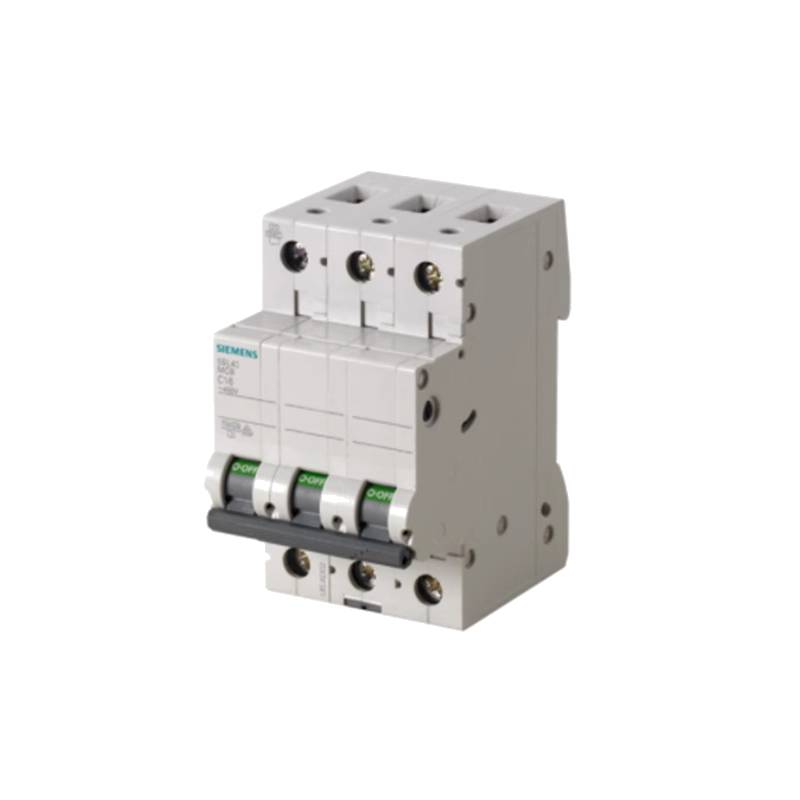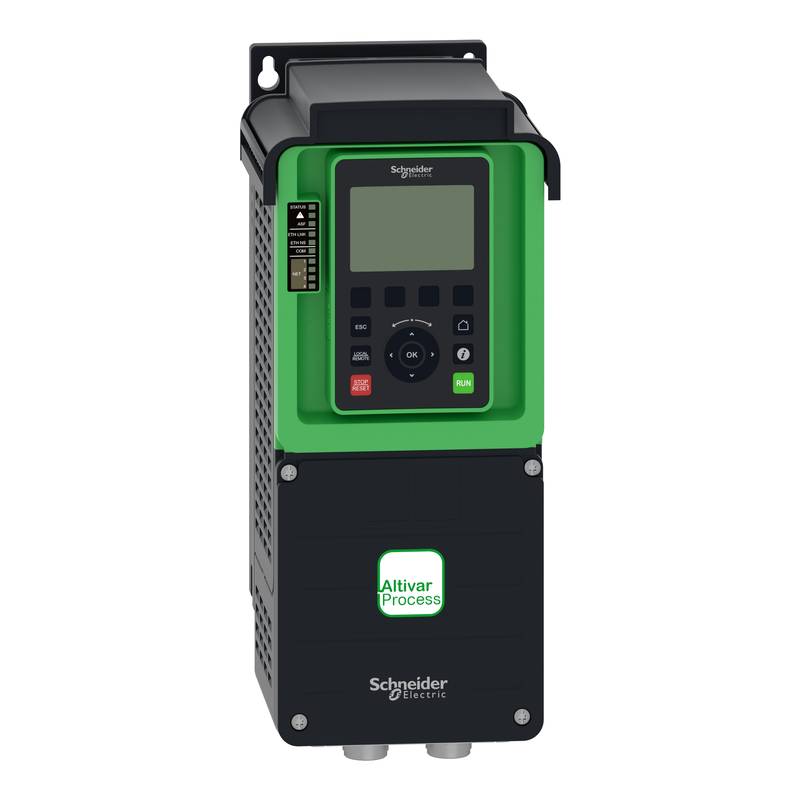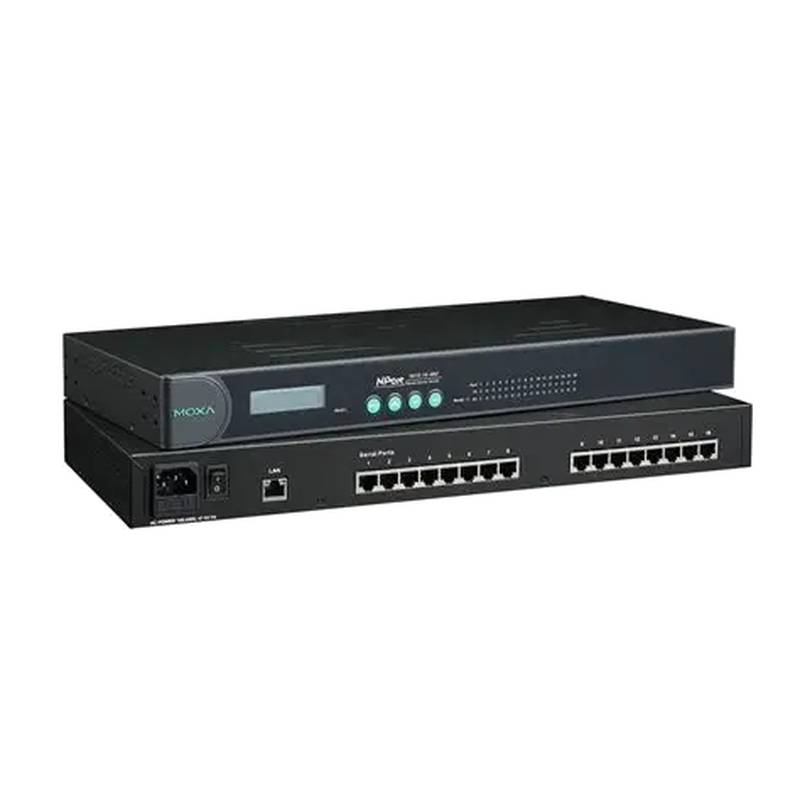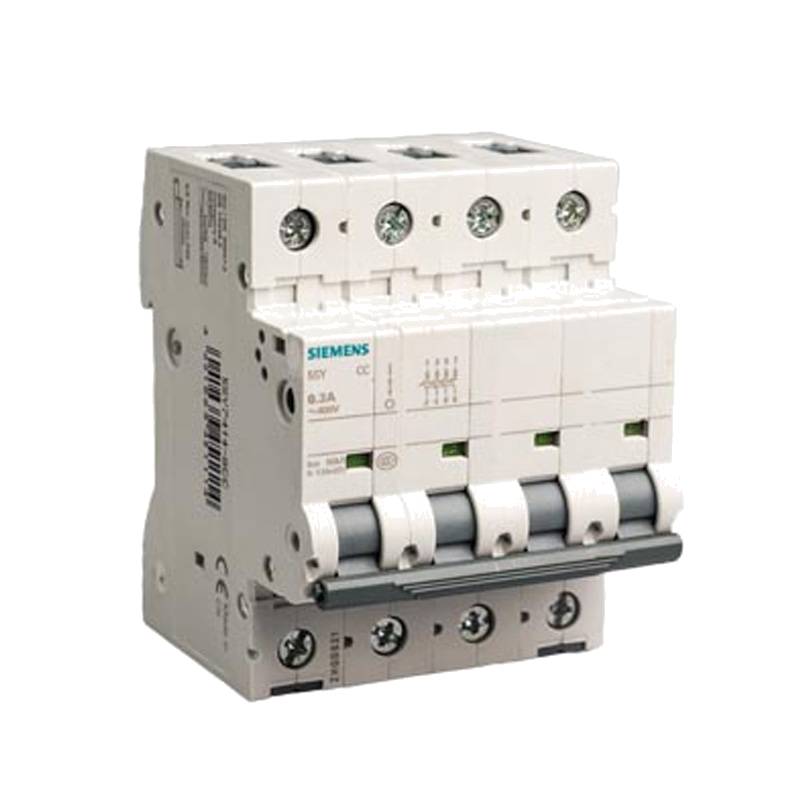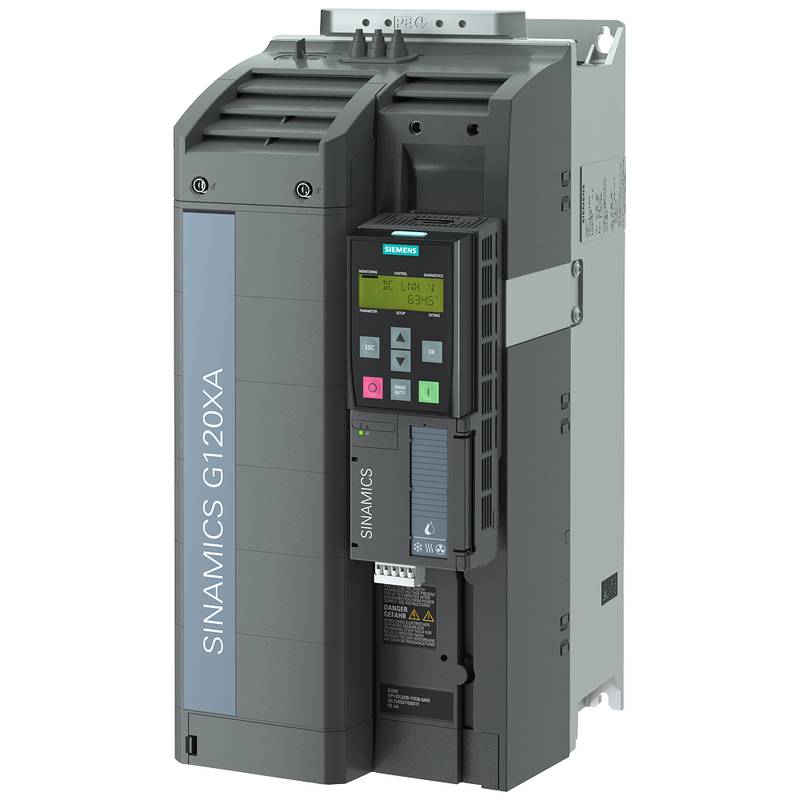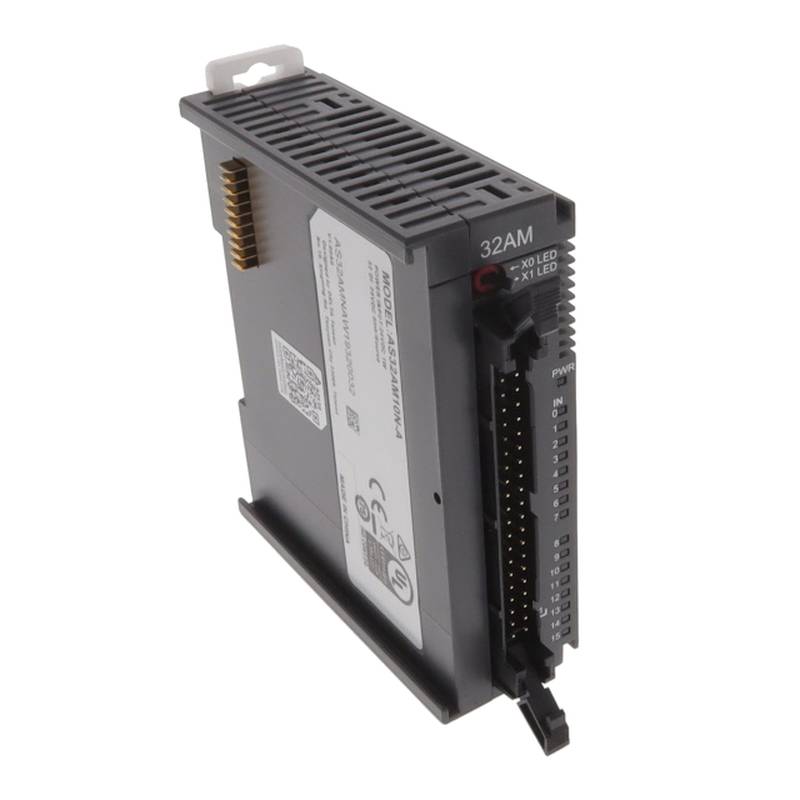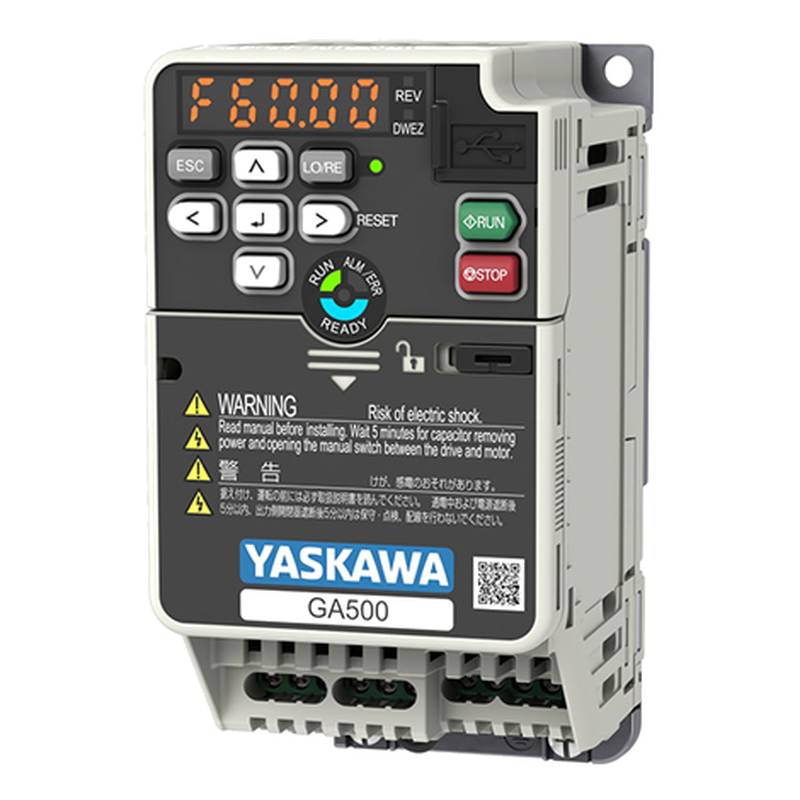
The Siemens 5SN6316-7CN Miniature Circuit Breaker (MCB) 3P 16A is a robust and reliable electrical protection device designed for demanding industrial applications. This 3-pole, 16-amp circuit breaker offers superior overcurrent and short-circuit protection, ensuring the safety and integrity of electrical systems. Its key advantages include high breaking capacity, enhanced tripping sensitivity, and long operational life, making it a preferred choice for discerning engineers and system integrators. Critical technical parameters include a rated current of 16A, a tripping characteristic of C, and a breaking capacity of 6kA, suitable for a wide range of power distribution needs.
Product Specifications
| Parameter | Specification |
| :------------------------ | :------------------------------------------ |
| Product Type | Miniature Circuit Breaker (MCB) |
| Manufacturer | Siemens |
| Model Number | 5SN6316-7CN |
| Poles | 3 |
| Rated Current (In) | 16A |
| Rated Voltage (Un) | 400V AC |
| Tripping Characteristic | C Curve |
| Breaking Capacity (Icn) | 6kA |
| Frequency | 50/60 Hz |
| Terminal Type | Screw Terminal |
| Mounting Type | DIN Rail |
| Protection Class | IP20 |
| Operating Temperature | -25°C to +55°C |
| Compliance Standards | IEC/EN 60898-1, IEC/EN 60947-2 |
Core Features & Market Positioning
The Siemens 5SN6316-7CN MCB stands out in the market due to its inherent Siemens quality and advanced protection features. It is engineered with a robust thermal-magnetic tripping mechanism, providing reliable protection against both overload and short-circuit conditions. The C-curve characteristic is optimized for industrial environments where temporary inrush currents from motors or transformers are common, preventing nuisance tripping while still offering rapid protection during fault events. This MCB is positioned as a high-performance, cost-effective solution for critical power distribution circuits in commercial and industrial settings. Its compact design and easy DIN rail mounting further enhance its appeal in a competitive landscape focused on space-saving and installation efficiency.
Key Application Scenarios
This Siemens 3-pole, 16A MCB is ideally suited for protecting main feeders and branch circuits in various industrial environments. Common applications include safeguarding motor control centers (MCCs), distribution boards in manufacturing plants, and power supply circuits for industrial machinery. Its 6kA breaking capacity makes it suitable for installations where fault current levels are moderately high. Engineers frequently specify the 5SN6316-7CN for applications requiring reliable protection of inductive loads, such as pumps, fans, and conveyor systems. It is also a sound choice for protecting sensitive electronic equipment within industrial automation setups, ensuring uninterrupted operation.
Practical System Integration Guidance
Integrating the Siemens 5SN6316-7CN MCB into existing electrical infrastructure is straightforward due to its standard DIN rail mounting and accessible screw terminals. For installation, ensure the main power supply is de-energized. The three poles should be connected in series with the live conductors of the circuit to be protected, with the load connected to the output terminals. The neutral conductor, if applicable to the system, is typically not passed through the MCB in a 3-pole configuration designed for line-to-line protection or three-phase loads. Always adhere to local electrical codes and standards during installation. For commissioning, verify correct wiring and test the tripping mechanism using a suitable test device to confirm proper functionality.
Operation and Risk Mitigation
The 5SN6316-7CN operates by automatically interrupting the circuit when the current exceeds a predetermined level, either due to overload (thermal tripping) or a sudden surge (magnetic tripping). The C-curve tripping characteristic is designed to allow for inrush currents up to 5-10 times the rated current, preventing unnecessary shutdowns while still providing swift protection against dangerous short circuits. To mitigate risks, ensure the MCB is correctly rated for the circuit's expected load and potential fault currents. Avoid bypassing or tampering with the internal tripping mechanisms. Regular visual inspections and periodic functional testing are recommended to ensure continued reliable operation and prevent potential hazards like electrical fires or equipment damage.
Scalability & Long-Term Value
The Siemens 5SN6316-7CN MCB is designed for longevity and compatibility within Siemens' comprehensive electrical product ecosystem. Its adherence to international standards ensures it can be integrated with other protective devices and control components from various manufacturers, offering flexibility in system design. While MCBs are generally considered end-of-life protection devices rather than components for active scalability, their robust construction and reliable performance contribute to the long-term value of the electrical installation. For future upgrades or expansions, the standard DIN rail mounting facilitates easy replacement or addition of new protection devices. Compatibility with Siemens' broader industrial automation platforms can be leveraged for enhanced monitoring and control if integrated into a larger system.
FAQs
1. What is the primary function of the Siemens 5SN6316-7CN MCB?
The Siemens 5SN6316-7CN MCB serves as an automatic electrical switch. Its main role is to protect electrical circuits from damage caused by overcurrents, including overloads and short circuits. It safeguards equipment and prevents potential fire hazards.
This device ensures operational continuity and safety in various industrial and commercial electrical systems. It provides a crucial layer of protection against electrical faults.
The MCB automatically trips, interrupting the power flow, when an unsafe current level is detected. This prevents damage to downstream components and wiring.
2. Can the Siemens 5SN6316-7CN MCB be used for single-phase and three-phase applications?
This specific model, the 5SN6316-7CN, is a 3-pole (3-phase) circuit breaker. It is designed to protect three live conductors simultaneously. It is not suitable for single-phase applications requiring only a 1-pole or 2-pole device.
For three-phase systems, all three poles should be used to ensure balanced protection and safety for all live conductors. This is standard practice for industrial three-phase power distribution.
If you require protection for single-phase circuits, a single-pole (1P) or double-pole (2P) MCB from Siemens or a compatible manufacturer would be necessary.
3. What does "C-curve" tripping characteristic mean for this MCB?
A "C-curve" tripping characteristic indicates how quickly the MCB will trip in response to an overcurrent. C-curve breakers are designed to handle moderate inrush currents, typically from motor starts or transformer energization.
This means the breaker can tolerate short-duration current surges of approximately 5 to 10 times its rated current (16A in this case) without tripping. This reduces nuisance tripping in industrial settings.
However, it will still trip very rapidly on short-circuit faults, providing essential protection against severe electrical events. It offers a balance between sensitivity and robustness for inductive loads.
4. What is the breaking capacity (Icn) of the Siemens 5SN6316-7CN MCB?
The breaking capacity, denoted as Icn, for the Siemens 5SN6316-7CN is 6kA (kiloamperes). This is the maximum fault current that the MCB can safely interrupt without sustaining damage.
This 6kA rating is suitable for many standard industrial and commercial installations where the prospective fault current is within this limit. It is crucial to verify this value against the system's actual fault current levels.
If the system's potential fault current exceeds 6kA, a higher breaking capacity MCB or additional protective devices like fuses would be required to ensure safety.
5. How should the Siemens 5SN6316-7CN MCB be installed on a DIN rail?
Installation on a standard 35mm DIN rail is straightforward. The MCB has a mounting clip on its rear that engages with the rail. Ensure the rail is securely mounted in the enclosure.
To mount, align the clip at the top of the MCB with the top edge of the DIN rail, then push the MCB downwards and slightly towards the rail until it clicks into place. Ensure it is firmly seated.
Before energizing, verify correct wiring to the line (input) and load (output) terminals. Always follow local electrical codes and safety procedures during installation.
6. What are the typical applications for a 3-pole, 16A MCB like the 5SN6316-7CN?
This 3-pole, 16A MCB is commonly used for protecting three-phase circuits in industrial and commercial settings. Typical uses include safeguarding motors, pumps, fans, and other three-phase equipment.
It is also suitable for use in main distribution boards or sub-distribution boards that feed three-phase loads. Its 16A rating makes it appropriate for circuits with moderate power requirements.
Applications can range from manufacturing plants and workshops to building services and automation systems requiring reliable three-phase power protection.
7. What standards does the Siemens 5SN6316-7CN MCB comply with?
The Siemens 5SN6316-7CN MCB complies with key international and European standards for circuit breakers. These include IEC/EN 60898-1 and IEC/EN 60947-2.
Compliance with these standards ensures that the MCB meets rigorous safety, performance, and reliability requirements for electrical protection devices. It is tested for various operational conditions.
These certifications provide confidence in the product's suitability for use in a wide array of electrical installations worldwide, meeting regulatory demands.
8. Can this MCB be used in extreme temperature environments?
The Siemens 5SN6316-7CN MCB is designed for operation within a temperature range of -25°C to +55°C. This covers a broad spectrum of typical industrial operating conditions.
Operating outside this specified temperature range may affect the MCB's performance, particularly its tripping characteristics. Extreme cold can make thermal elements less sensitive, while extreme heat can increase sensitivity.
For applications with temperatures consistently beyond this range, specialized industrial circuit breakers designed for harsh environments might be necessary.
9. What is the difference between a C-curve and a B-curve MCB?
A B-curve MCB trips at lower multiples of its rated current (typically 3-5 times) compared to a C-curve. B-curve breakers are generally used for purely resistive loads or light inductive loads in residential or small commercial applications.
A C-curve MCB, like the 5SN6316-7CN, has a higher tolerance for inrush currents (5-10 times rated current). This makes it more suitable for inductive loads such as motors, transformers, and fluorescent lighting found in industrial settings.
The choice between B and C curves depends on the type of electrical load and the expected transient current demands to prevent nuisance tripping while maintaining effective protection.
10. How can I reset the Siemens 5SN6316-7CN MCB after it has tripped?
After the MCB has tripped due to an overload or short circuit, it will typically have its toggle switch in the OFF position or an intermediate position. To reset it, first, identify and rectify the cause of the trip (e.g., reduce the load or repair the fault).
Once the fault is cleared, firmly push the toggle switch upwards to the ON position. If the circuit is still experiencing issues or the fault persists, the MCB will trip again immediately.
If the MCB trips repeatedly without an apparent fault, it may indicate an issue with the MCB itself or a persistent problem within the circuit requiring professional electrical diagnosis.














